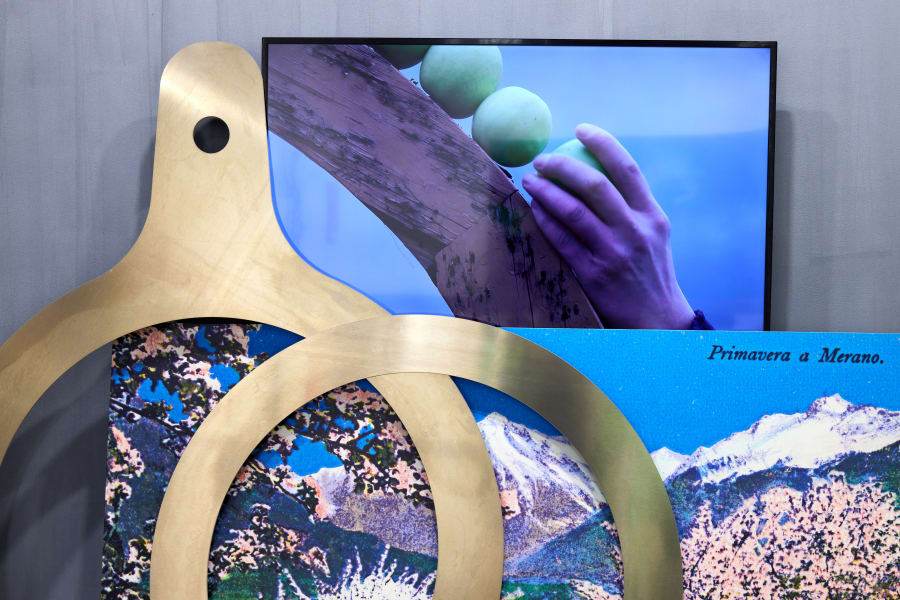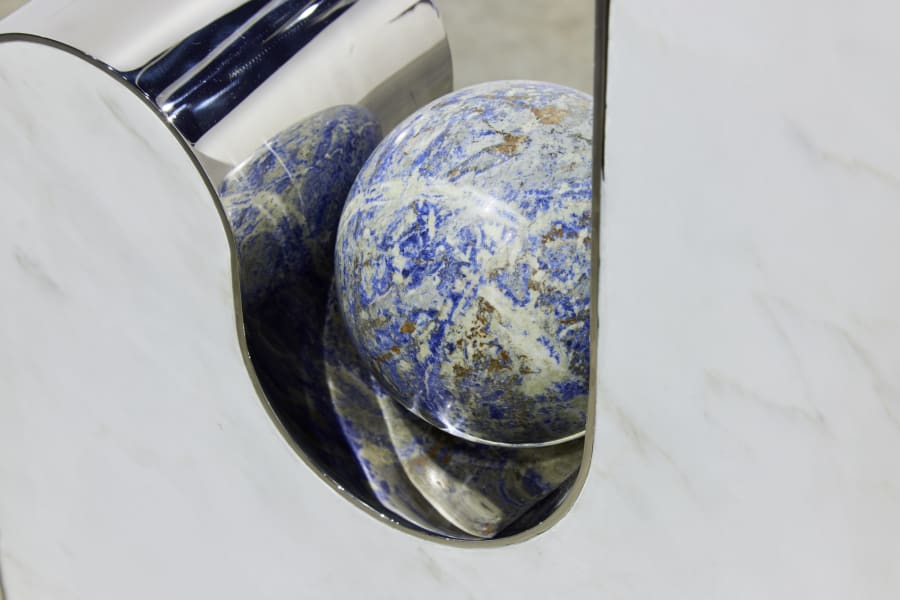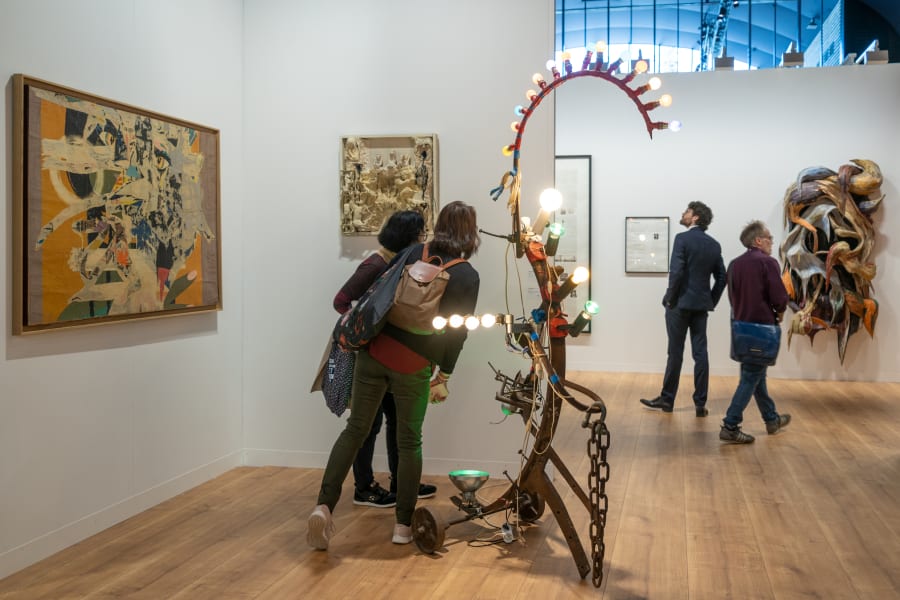In times of economic hardship, it is usually lower and middle-tier dealers who feel the pinch most, with those at the top considered largely inured to economic and political pressures. But that trend appears to be in reverse. According to The Art Basel and UBS Art Market Report 2024, dealers with turnover of less than USD 500,000 had the largest increase in sales (11%) last year, while those at the top of the market with turnover of more than USD 10 million saw averages decline by 7%.
To some extent, these findings are being borne out in London, where pockets of activity and growth appear most robust among emerging galleries and those who are less than 10 years old. Over the past few years, galleries have sprung up across the capital including Albion Jeune, Brooke Benington, and Ab-Anbar Gallery in Fitzrovia; Brunette Coleman and Hot Wheels (hailing from Athens) in Bloomsbury; and Neven Gallery, Sherbet Green, Ginny on Frederick, and Rose Easton in the city’s east. Others such as Emalin and Union Pacific have opened second spaces after a relatively short amount of time in business.
There has also been a maturation in the middle, with galleries including Castor Gallery and Niru Ratnam opening bigger or second spaces. Further up the ladder, there have been flurries of expansion – after 15 years in Fitzrovia, Pilar Corrias opened a large gallery on Conduit Street in October, while Stephen Friedman and Alison Jacques moved into bigger flagship spaces on Cork Street. This week, the famous Mayfair gallery hub has been decked out with banners created by Britain’s Venice Biennale artist John Akomfrah to mark the fourth edition of London Gallery Weekend (May 31 to June 2), which sees 134 galleries taking part across the UK capital.
There may be a sense of conviviality around the collaborative event, but air is thin at the top of the market, particularly for blue-chip works (dealers note in the Art Basel and UBS report that buyers are more cautious spending larger sums than in 2021 and 2022) and there have indeed been casualties in London. In April, the postwar titan Marlborough Gallery announced it was closing after 80 years in business, while two well-known London galleries, Fold and Simon Lee, have also ceased trading.
So why open a gallery in the UK capital now?
Brexit is a lasting thorn in the British art market’s side, particularly when it comes to art imports which have declined at a noticeable rate. Niru Ratnam, who launched a gallery in Soho in 2020 and moved to Fitzrovia earlier this year, where he now has a coveted ground-floor gallery, says the sector has become more accustomed to the economic hurdles Brexit presented, but the ‘psychological impact’ is longer lasting. ‘Many Europeans saw it as a rejection, and that is very unfortunate as it was a very narrow majority who swayed the vote,’ he says. ‘I think a new administration will rebuild ties with Europe and I am looking forward to that.’
Perhaps counterintuitively, Ratnam suggests that expanding at a time when the market is ‘going through a challenging moment’ will allow him to ‘continue to build a program that is attractive to collectors, curators, and institutions.’ He thinks the spate of gallery openings shows there is still deep confidence in London. ‘Aside from New York, London still has the best offering in terms of shows in commercial galleries, and curators and collectors are aware of that,’ he says. ‘Our contemporary public institutions are also still the best gathering of them in any one city in Europe with some great curators at the helm. It’s also great to see artist-run spaces making a little comeback.’
Lucca Hue-Williams, who opened Albion Jeune on Little Portland Street last October, says she is managing to keep overheads down with a small team. Her unique selling point is to show emerging international artists who have little to no presence elsewhere in London. She reopened the space in May after a revamp with an exhibition of paintings by the Saudi Arabian artist Alia Ahmad. The dealer’s father, Michael Hue-Williams, runs the Albion Barn gallery in Oxfordshire and has himself built influential contacts in China and the Middle East over several decades.
Art fairs are on the minds of many of London’s new gallerists, although, as Lucca Hue-Williams points out, the recent surge in shipping costs is causing dealers to look more locally. ‘The great thing about London is that it is such a hub,’ she says. ‘Lots of curators and collectors are always passing through.’
Leopold Thun, one of the founders of Emalin, says art fairs have helped build out the gallery’s clientele since the pandemic, particularly in the US. ‘This has allowed us to balance the UK and European markets with the US market,’ he adds. Established in 2016, the gallery opened a second space in Shoreditch in January. The move was prompted, Thun says, by an opportunity to rent a Grade II-listed building just a 3-minute walk from the existing gallery.
Doubling down in London not only reduces potential traveling time between venues, but it also allows Emalin to take a more considered approach to programming. ‘We realized that having two spaces allowed us to do longer exhibitions, countering the trend of such fast-paced shows,’ Thun says.
Looking forward, the dealer remains optimistic in the face of challenges in the UK. ‘The creative scene in London always thrives in difficult situations, it seems to lie in the DNA of the city to rise to the occasion,’ he says. ‘I see most openings and expansions as responses to this duress, because in times of change one can’t carry on with business as usual. For the most part, they are very clever new ideas and models that counter the difficulties that we have faced in the past years.’
Download the Art Basel and UBS Art Market Report 2024 here
Anny Shaw is a contributing art market editor at The Art Newspaper and author of Resist: Rebellion, Dissent & Protest in Art.
Published on May 30, 2024.
Caption for top-image: Detail of a work by Caroline Coon presented by Stephen Friedman Gallery at Art Basel Miami Beach 2023.


